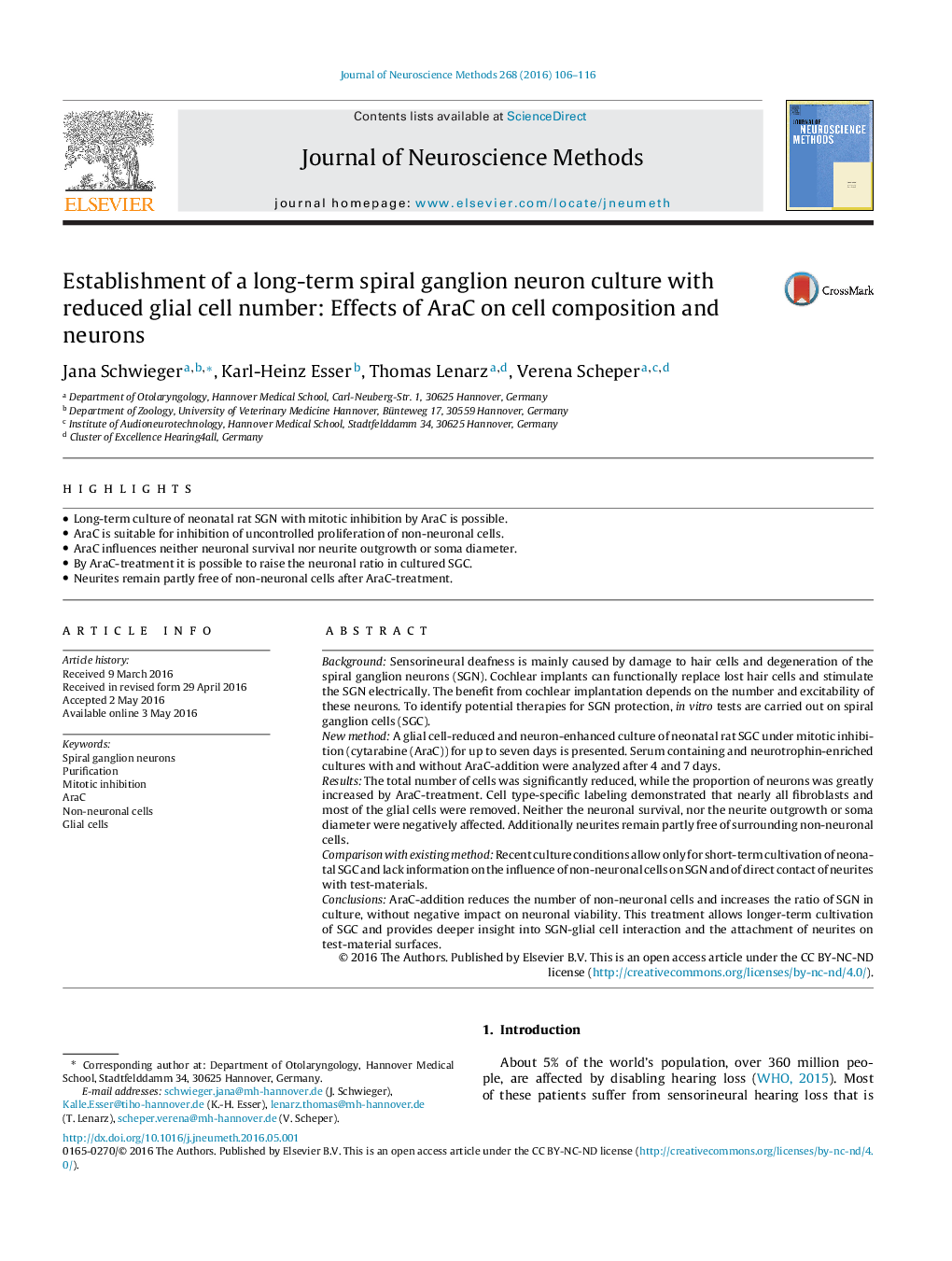| Article ID | Journal | Published Year | Pages | File Type |
|---|---|---|---|---|
| 6267647 | Journal of Neuroscience Methods | 2016 | 11 Pages |
â¢Long-term culture of neonatal rat SGN with mitotic inhibition by AraC is possible.â¢AraC is suitable for inhibition of uncontrolled proliferation of non-neuronal cells.â¢AraC influences neither neuronal survival nor neurite outgrowth or soma diameter.â¢By AraC-treatment it is possible to raise the neuronal ratio in cultured SGC.â¢Neurites remain partly free of non-neuronal cells after AraC-treatment.
BackgroundSensorineural deafness is mainly caused by damage to hair cells and degeneration of the spiral ganglion neurons (SGN). Cochlear implants can functionally replace lost hair cells and stimulate the SGN electrically. The benefit from cochlear implantation depends on the number and excitability of these neurons. To identify potential therapies for SGN protection, in vitro tests are carried out on spiral ganglion cells (SGC).New methodA glial cell-reduced and neuron-enhanced culture of neonatal rat SGC under mitotic inhibition (cytarabine (AraC)) for up to seven days is presented. Serum containing and neurotrophin-enriched cultures with and without AraC-addition were analyzed after 4 and 7 days.ResultsThe total number of cells was significantly reduced, while the proportion of neurons was greatly increased by AraC-treatment. Cell type-specific labeling demonstrated that nearly all fibroblasts and most of the glial cells were removed. Neither the neuronal survival, nor the neurite outgrowth or soma diameter were negatively affected. Additionally neurites remain partly free of surrounding non-neuronal cells.Comparison with existing methodRecent culture conditions allow only for short-term cultivation of neonatal SGC and lack information on the influence of non-neuronal cells on SGN and of direct contact of neurites with test-materials.ConclusionsAraC-addition reduces the number of non-neuronal cells and increases the ratio of SGN in culture, without negative impact on neuronal viability. This treatment allows longer-term cultivation of SGC and provides deeper insight into SGN-glial cell interaction and the attachment of neurites on test-material surfaces.
